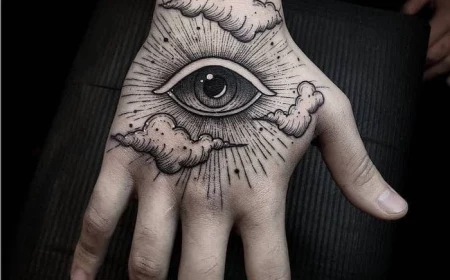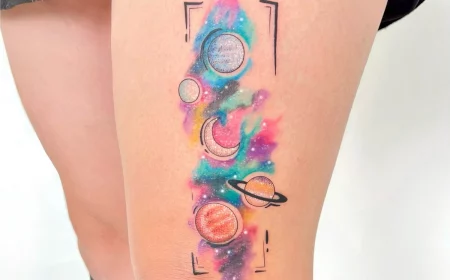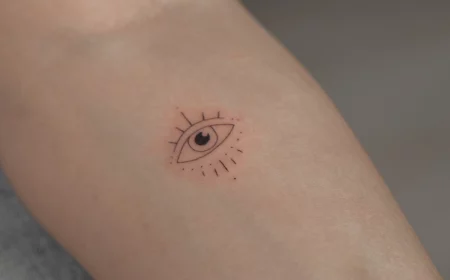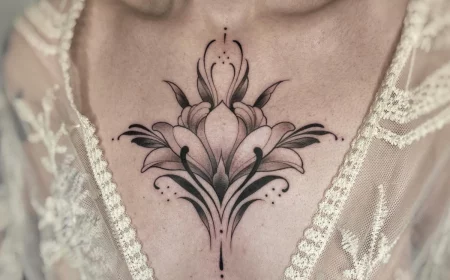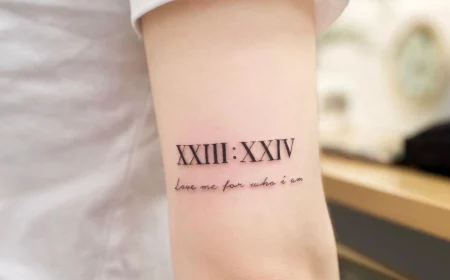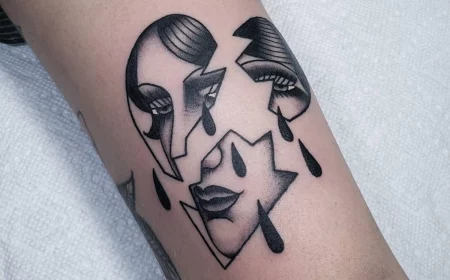Think Before You Ink: The Hidden Meanings Behind Common Tattoos
I’ve been slinging ink for a long, long time. I’ve seen styles rise and fall, and I’ve watched techniques evolve in ways I never thought possible. But one thing is constant: a tattoo is a permanent mark. It tells a story about you, and my job is to make sure you know exactly what story you’re telling to the world.
In this article
- The Silent Language of Ink
- The Teardrop: Way More Than Just Sadness
- The Three Dots: ‘Mi Vida Loca’
- The Five-Point Crown: Royalty in the Wrong Kingdom
- The Spiderweb: Caught in a Nasty System
- Barbed Wire: From Prison Walls to Pop Fad
- The Clown Tattoo: No Laughing Matter in Brazil
- A Note on Religious & Cultural Symbols
- How to Do Your Own Homework
- Already Have Problematic Ink? Here’s the Real Deal
- Your Skin, Your Story, Your Choice
- Inspirational Gallery
Most of the time, people come in with something deeply personal—a portrait, a meaningful quote, a flower for a loved one. It’s a beautiful process. But every now and then, someone will slide their phone across the counter, showing me a picture they pulled from the internet. They’ll be excited about a symbol that just looks cool. And that’s my cue to put the machine down and have a real conversation.
You see, some symbols carry a heavy history, a weight that most people just aren’t aware of. They were born in closed-off worlds like prisons, gangs, or very specific subcultures. Getting one tattooed without understanding its real meaning can lead to some seriously awkward, or even dangerous, situations. It can send a message you never, ever intended. Look, I’m not here to police your choices. Your body, your canvas. But I feel like it’s my duty to share what I’ve learned. I want you to walk out of my studio with a piece of art you’ll love forever, not a liability you’ll regret.
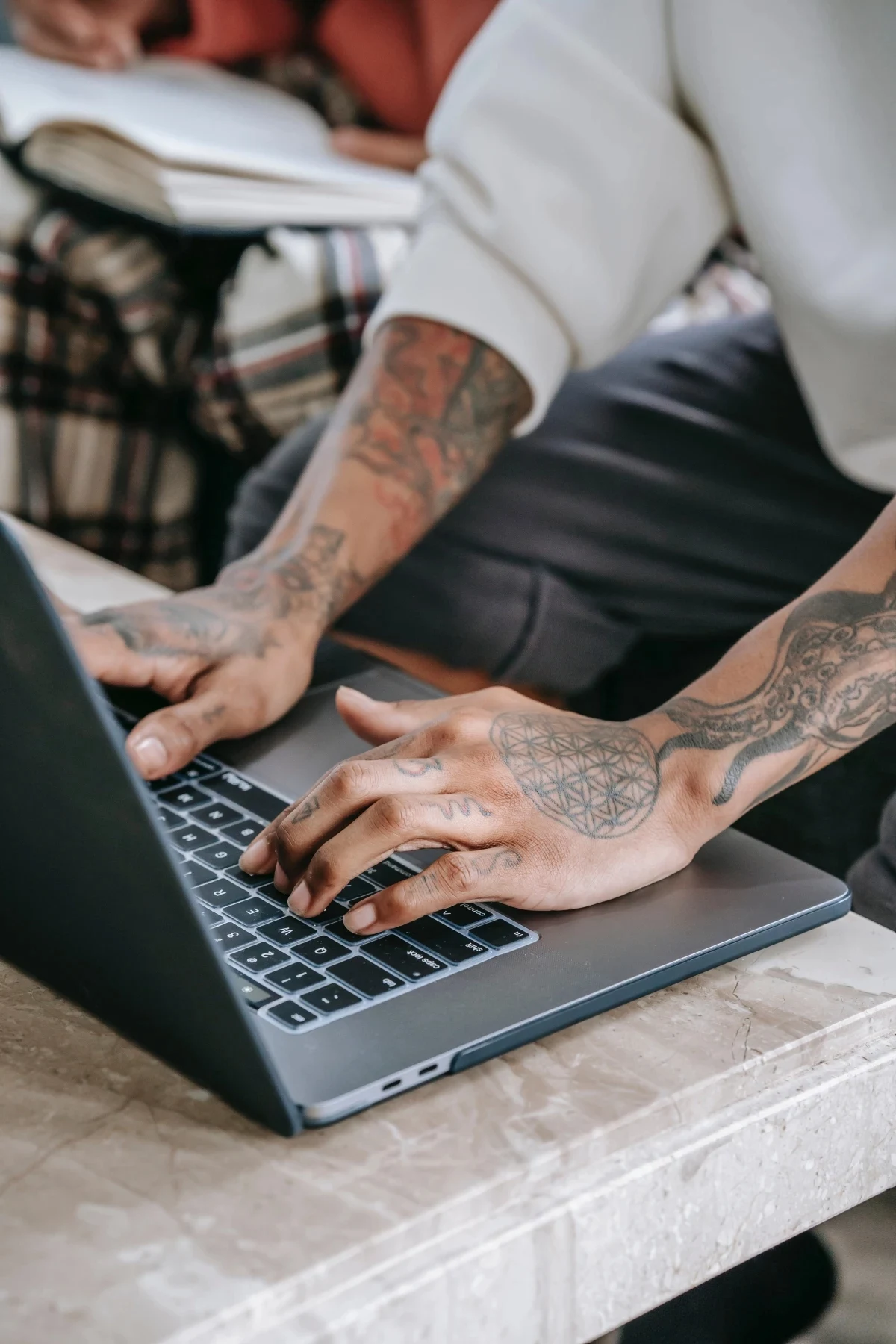
The Silent Language of Ink
So, how does a simple drawing get so loaded with meaning? It usually happens inside tight-knit groups. Picture a prison yard or a gang where you can’t always speak freely. Symbols become a shortcut, a silent language. They can show who you’re with, what you’ve done, or where you stand in the hierarchy. A tattoo basically becomes a resume that’s written on your skin.
The whole point of this visual code is for insiders to get it and for outsiders to miss it. The problem? The internet blew the doors off. These private, coded symbols are now plastered all over social media, completely stripped of their context. People just see a cool design, not the decades of history, violence, or cultural significance behind it. Honestly, we tattoo artists are often the last line of defense against a bad decision. When we put these symbols on the wrong person, it not only dilutes their meaning for those who earned them, but it can put our clients in harm’s way.
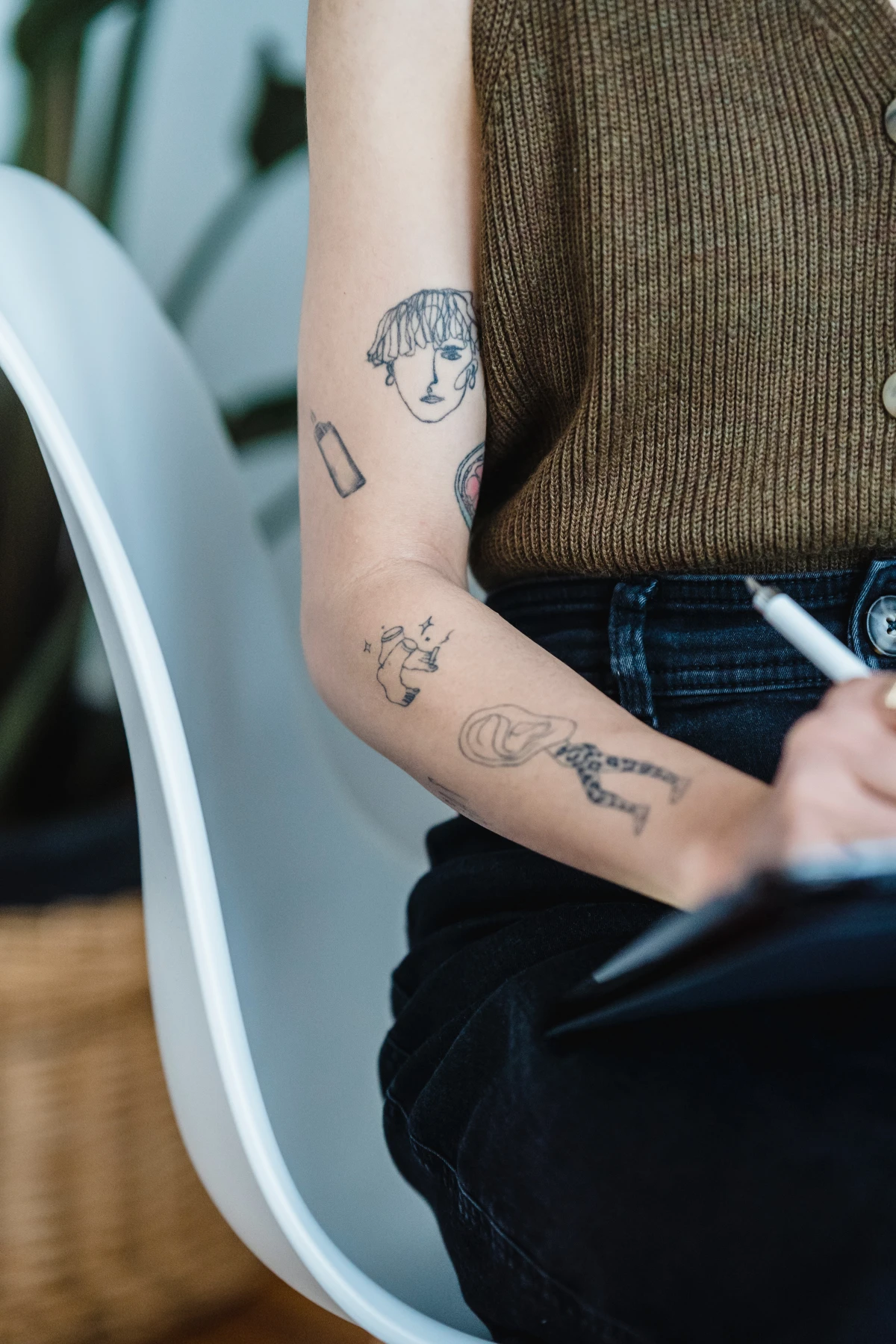
The Teardrop: Way More Than Just Sadness
This is probably the most well-known example. Just about everyone’s heard that a teardrop tattoo has something to do with prison, but the details are what really matter. I once had a sweet young woman come in wanting a tiny teardrop under her eye to remember her cat that had just passed away. I had to gently explain the kind of trouble she might be inviting.
In many circles, a teardrop under the eye isn’t just a sign of mourning; it’s a claim. A hollow teardrop outline can signal that the wearer lost a friend or family member to violence and may be seeking revenge. But a filled-in, solid black teardrop… that’s a whole different level. It can be a public declaration that the wearer has taken a life. It’s a badge of honor in a world where violence equals status.
Heads up: The meaning can shift depending on the region or even which eye it’s under. Sometimes it’s about serving a long prison sentence. Other times, it’s specifically about murder. The point is, people in that world believe you have to earn it. Wearing one without that history is a huge sign of disrespect and can lead to a very real, very dangerous confrontation. It’s just not worth the risk for an aesthetic choice.

The Three Dots: ‘Mi Vida Loca’
This one’s a lot more subtle. It’s just three little dots in a triangle, usually found on the hand near the thumb or close to the eye. Because it’s so simple, it’s a classic “stick and poke” tattoo. In a professional shop, I’d use a fine 3RL needle and sterile ink, but on the street, it’s often done with a sewing needle and some makeshift ink from ash and shampoo.
The three dots stand for “mi vida loca,” or “my crazy life.” It’s not tied to one specific gang, but it represents a general allegiance to the gang lifestyle. It’s a quiet nod that says, “I’m part of this world.” While it might not provoke a rival gang, it’s an immediate red flag for law enforcement and instantly marks you as part of a life you (hopefully) have no connection to.
The Five-Point Crown: Royalty in the Wrong Kingdom
Crowns are super popular tattoo requests, symbolizing everything from self-respect to personal power. And most designs are totally fine! But there’s one specific design that’s incredibly dangerous to wear if you aren’t a member: the five-point crown.
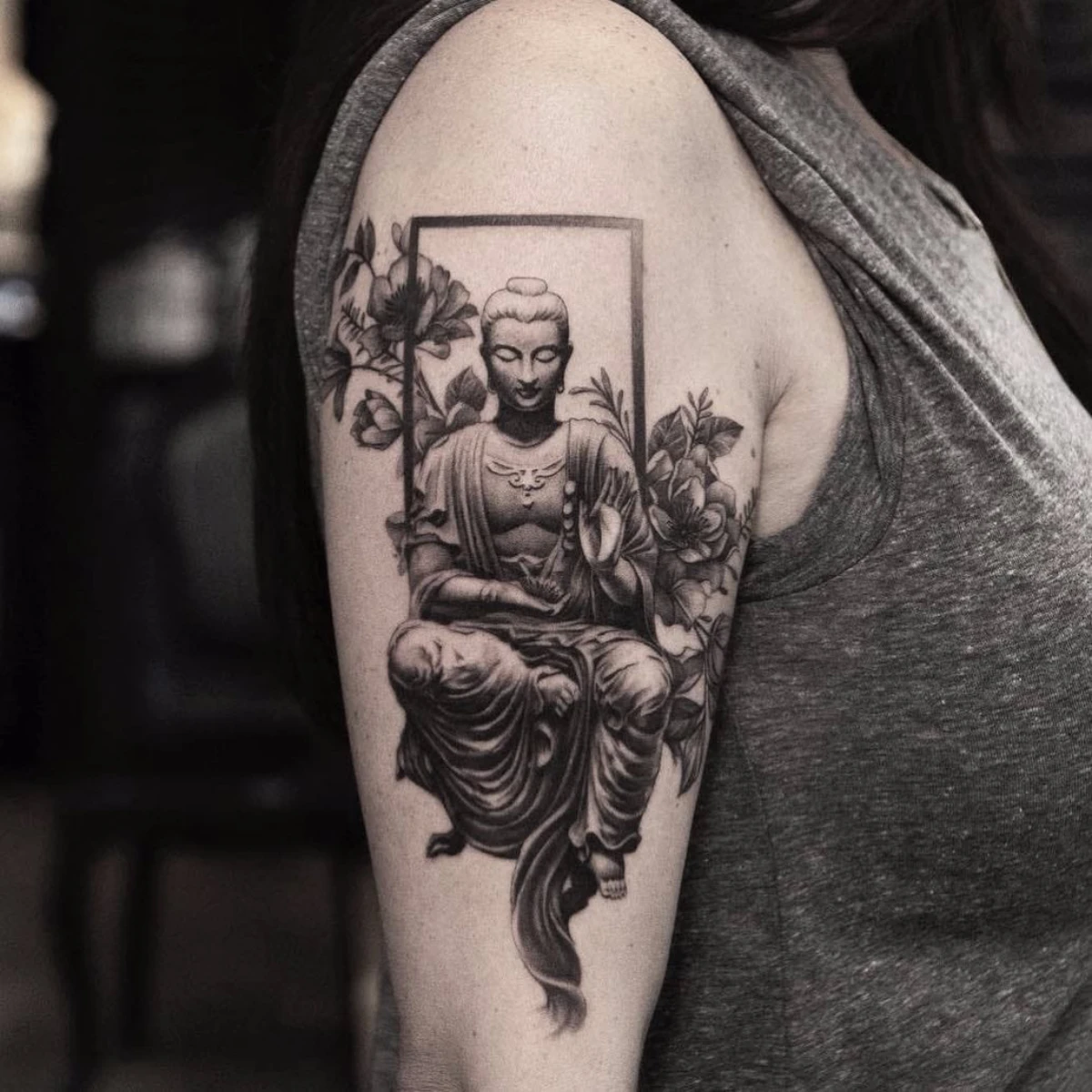
This is the primary symbol of a large and highly organized street gang with a nationwide presence. The five points have specific meanings within the gang—love, honor, obedience, sacrifice, and righteousness. This isn’t a vague symbol; it’s a direct and unmistakable claim of membership. I’ve personally had to turn away clients who brought in this design, having no idea what it meant. I explained to one young guy that getting that tattoo in our city could get him seriously hurt, or worse. He was shocked, but thankfully, he was grateful for the warning.
A quick tip: If a client wants a crown, I guide them toward safer options. I’ll often pull up images of Art Nouveau or medieval-style crowns to show them how we can get that ‘royal’ feel without the life-threatening risk. We can do a three-point crown, a seven-point crown, or something completely custom. The goal is to capture the vibe, not the liability.
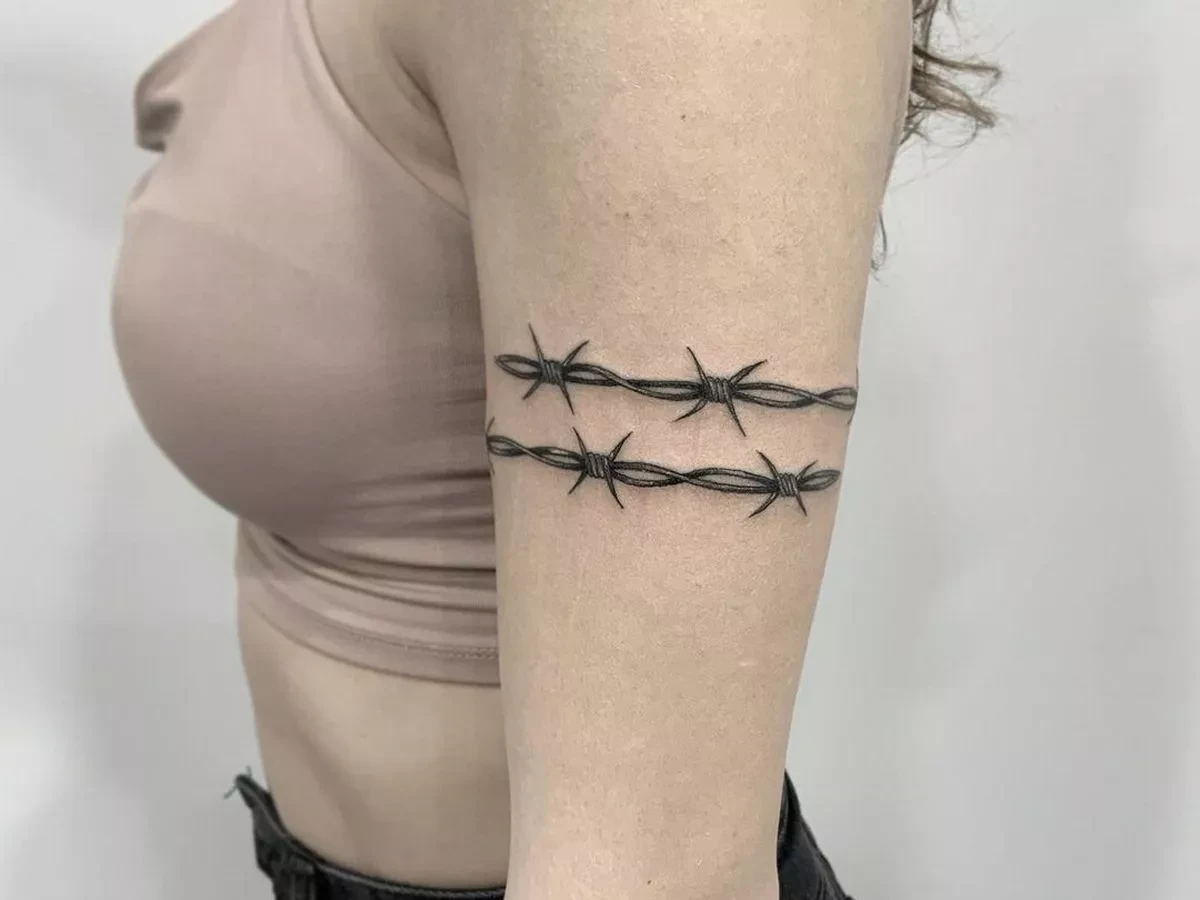
The Spiderweb: Caught in a Nasty System
A spiderweb tattoo, especially one on the elbow or neck, is another classic prison design. The symbolism is pretty direct: the web represents being trapped in the system, and the rings can signify the number of years spent behind bars. The elbow placement has its own meaning—it’s a nod to doing so much time that you’re just sitting around with your elbows on the table all day.
Now, this symbol has been adopted by other subcultures, like the punk scene, but its roots are deep in prison life. And like the teardrop, it’s often seen as something that has to be earned. To make things even more complicated, in some white supremacist circles, it can mean that the wearer has killed a minority. The fact that the meaning isn’t universal makes it even riskier. You just don’t know who is looking at your tattoo and what they see.
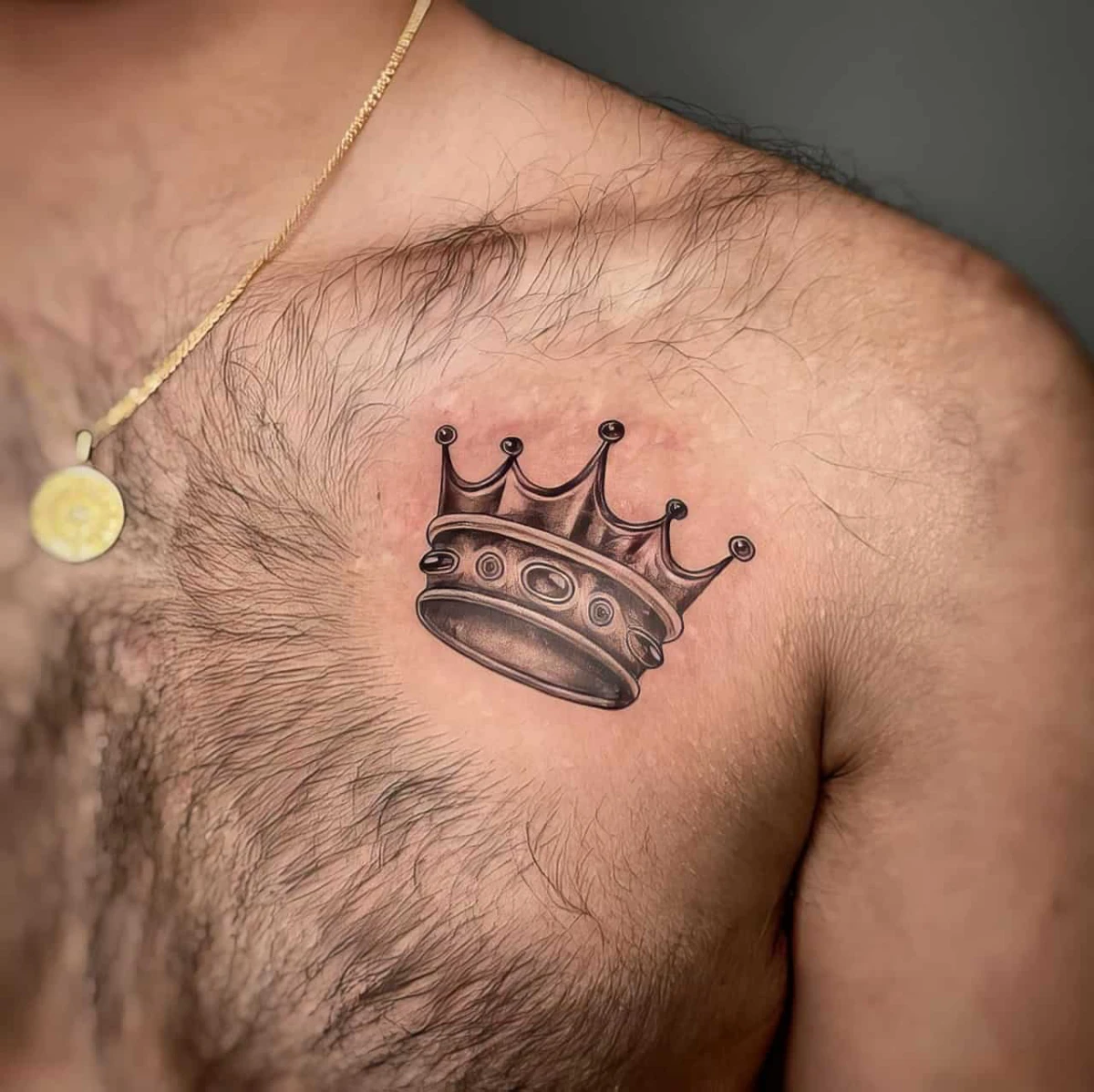
Barbed Wire: From Prison Walls to Pop Fad
There was a time when the barbed wire armband tattoo was a massive trend. But long before it hit pop culture, it had a much tougher meaning. In Russian prisons and other corners of the criminal underworld, barbed wire could signify a life sentence without the possibility of parole. Each barb on the wire could also represent a year served. It was a clear sign of someone who had been through the wringer.
Today, the meaning is mostly diluted, but the original code still exists in some circles. The risk is lower than with, say, a five-point crown, but it’s not zero. Someone who knows the old language might see it and make assumptions about you that you’re not prepared to back up.
The Clown Tattoo: No Laughing Matter in Brazil
This is a wild one, and a perfect example of how meaning can be tied to a specific place. In most of the world, a clown tattoo is just… a clown tattoo. But if you’re traveling in Brazil, it’s a whole different story. You could be putting yourself in grave danger.
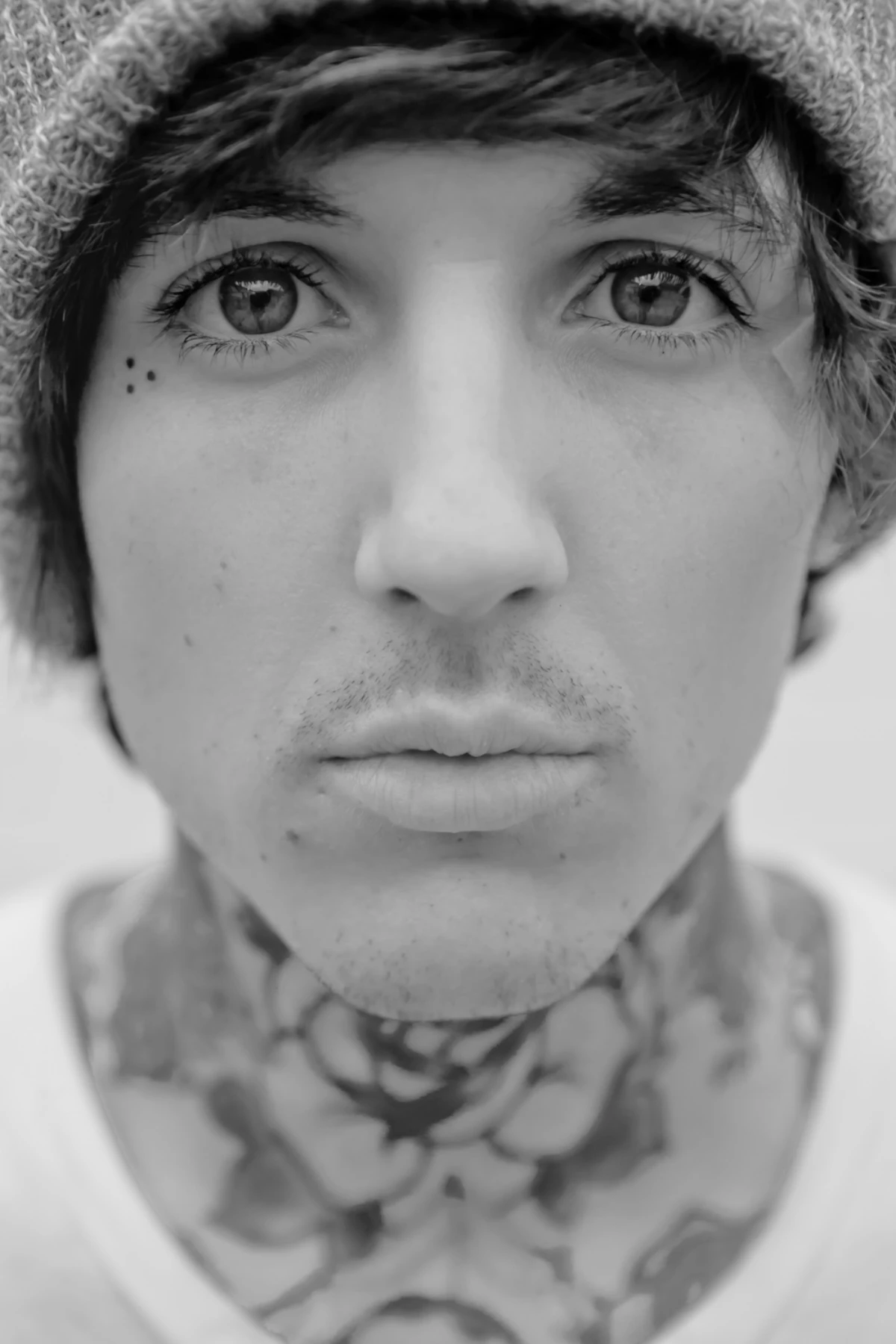
In Brazilian crime syndicates, a clown tattoo is the mark of a police killer. It’s one of the most serious and feared symbols in their underworld—a direct challenge to law enforcement. Cops there are trained to see that tattoo as a sign of an extremely dangerous person. Wearing one can make you a target for both criminals and the police.
I remember a client who was getting ready for a big backpacking trip through South America. He wanted a big, colorful clown on his calf. It had personal meaning for him as a circus performer. I had to sit him down and tell him this. He was bummed, for sure, but he completely understood the risk and decided to wait. That’s a huge part of my job—providing the context that can keep you safe.
A Note on Religious & Cultural Symbols
This is a different kind of warning, one based on respect. It’s common for people to get tattoos of deities or sacred figures they find beautiful, like the Buddha, to represent peace or enlightenment.
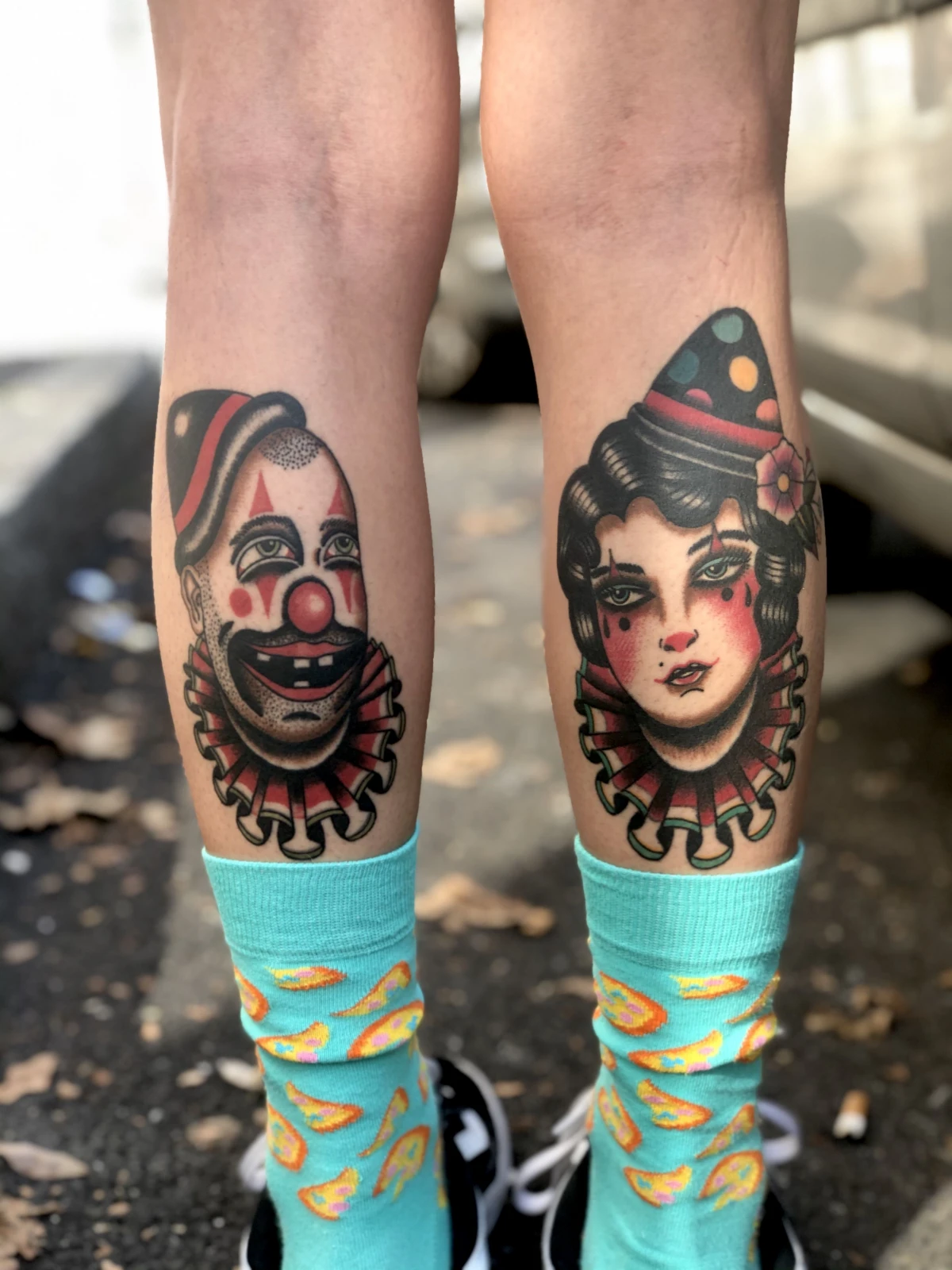
However, in many Buddhist countries, such as Thailand or Sri Lanka, getting a Buddha tattoo is seen as deeply disrespectful. In their faith, the Buddha is sacred, and placing his image on the skin—especially on lower parts of the body like the legs or feet—is a form of sacrilege. Tourists have been detained or even deported for this. It’s not about them being difficult; it’s about defending a core belief.
I extend this principle to all sacred symbols. Before I ink a Hindu deity, a Native American symbol, or an Islamic pattern, I have a conversation with the client. What’s your connection to this? It’s not about gatekeeping art; it’s about preventing the casual appropriation of something deeply meaningful to an entire culture or religion.
How to Do Your Own Homework
Feeling nervous? Good. A little research goes a long way. Before you fall in love with a symbol you found online, do your own vetting. It’s pretty simple:
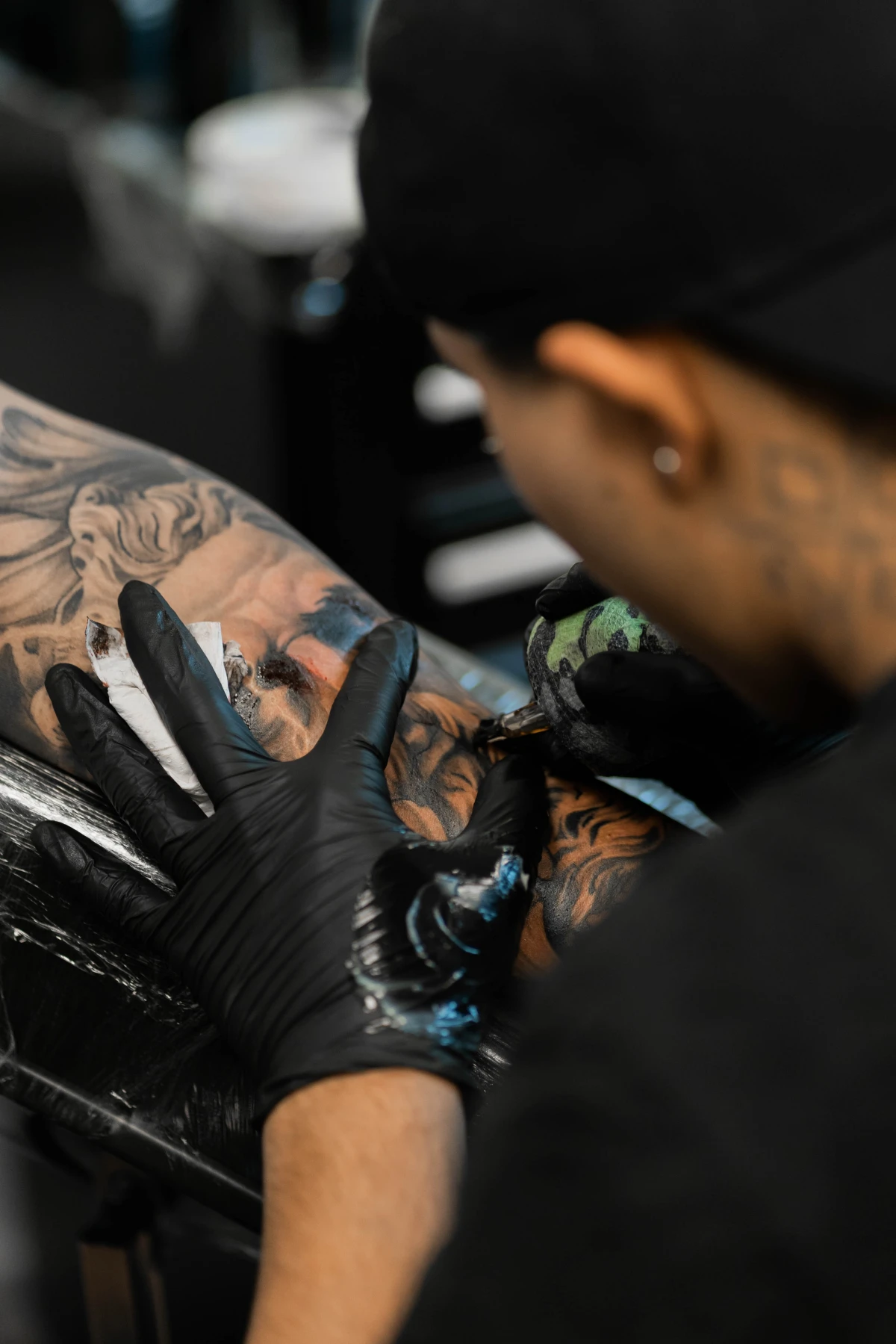
- Step 1: Do a reverse image search on Google. See where the image comes from and what kind of sites it appears on.
- Step 2: Search the symbol’s name + keywords. Try searching for “[symbol name] meaning,” but also add terms like “gang,” “prison tattoo,” “hate symbol,” or “cultural meaning.” This is where the red flags will pop up.
- Step 3: Pay attention to who is wearing it. When you search for images, look at the people who have the tattoo. Do they look like they belong to a specific group? Context is everything.
Already Have Problematic Ink? Here’s the Real Deal
So, what if you’re reading this and your stomach just dropped because you already have one of these tattoos? Don’t panic. You have a couple of solid options: laser removal or a cover-up. Let’s break down what you’re actually looking at.
First, let’s talk money and pain. Laser removal is a long-haul commitment. You can expect to pay anywhere from $200 to $500 per session, and you’ll likely need 8 to 12 sessions, maybe more, spaced a couple of months apart. Oh, and yeah, it hurts. Most clients say it’s more painful than getting the tattoo in the first place. A cover-up, on the other hand, is a one-time cost, but it’s a specialist job. You should plan for it to cost around 25% to 50% more than a standard tattoo of the same size, simply because it’s way more complex.
Now, what about the result? Laser works by shattering the ink particles so your body can flush them away. It’s great for fading a tattoo for a cover-up or for full removal, but there’s no guarantee it will disappear completely. You might be left with a faint, ghostly image. A cover-up doesn’t erase the old tattoo; it uses a new, often larger and darker, design to hide it. An artist who specializes in cover-ups is a master of illusion, using dark shading and clever composition to trick the eye. It’s a real art form.
Your Skin, Your Story, Your Choice
At the end of the day, your body is your storybook, and you get to choose what’s written in it. My only hope is that this information helps you make that choice a conscious one. A good tattoo is a conversation with the world, so make sure you know what you’re saying.
And if you’re ever unsure, just talk to your artist. A true professional is more than just a technician; we’re custodians of this craft. Empower yourself by asking the right questions. Don’t be shy. Ask them straight up: “What do you know about the history of this symbol?” or “Is there any group that claims this design?” Their answer will tell you everything you need to know about their level of care and professionalism. Tell your own story, not someone else’s by accident.
Inspirational Gallery
Choosing the right artist is more than just scrolling through Instagram. Your top priority: Look for consistency in their portfolio, especially with line work and color saturation. Check for healed photos, not just fresh ones—that’s the true test of skill. A great artist will also be a great communicator, willing to discuss your idea and offer feedback, ensuring the final piece fits your body and will age well.
Nearly one-third of Americans (32%) have at least one tattoo, a figure that rises to 41% for adults under 30.
This surge in popularity means the industry is more innovative than ever, but it also underscores the importance of individuality. With so much ink out there, creating a piece that is truly personal and well-considered, rather than just following a trend, is what makes a tattoo timeless.
Thinking about where to place your new ink? Beyond visibility, consider how different body parts affect the tattoo over time.
- High-friction zones: Hands, feet, and inner thighs will cause ink to fade faster and lines to blur due to constant rubbing.
- High-stretch areas: Stomachs, ribs, and biceps can distort the design with significant weight fluctuation or muscle gain.
- Bony spots: Ankles, collarbones, and elbows not only rank high on the pain scale but the thin skin can also affect how the ink settles.
Does color ink really fade faster than black?
Not necessarily, but it requires more care. Lighter and brighter pigments, like yellows, light blues, and whites, are less dense and more susceptible to UV damage. Black ink, with its carbon base, is inherently more robust. To keep your colors vibrant, diligent sun protection is non-negotiable. Use a high-SPF sunscreen, like one from a specialized brand such as Mad Rabbit or Saniderm, once the tattoo is fully healed. Your diligence in the first few summers will determine its vibrancy a decade later.
The conversation around ink has evolved. It’s no longer just about aesthetics; it’s about ethics. Many top-tier studios now prioritize using vegan inks, which contain no animal products like glycerin (often from animal fat) or bone char. Brands like World Famous Ink, Intenze, and Eternal Ink lead the charge, offering vibrant, high-quality pigments that are cruelty-free without compromising on longevity or safety.
American Traditional (Old School): Characterized by bold black outlines, a limited and vibrant color palette (red, green, yellow, black), and iconic, simple imagery like eagles, anchors, and roses. These tattoos are built to last and read clearly from a distance.
Fine Line: A modern style using thin needles to create delicate, detailed, and often intricate designs. It’s perfect for script, botanicals, and subtle placements, but requires a highly skilled artist as shaky lines are unforgiving and blowouts are a risk.
Choose based on your desired aesthetic and the design’s complexity.
- Vibrant colors that pop, even years later.
- Crisp, sharp lines that don’t blur into a muddle.
- A smooth, healthy healing process with minimal scabbing.
The secret? It’s all about the first month. Your artist did their part; now it’s your turn. Follow their aftercare instructions to the letter, which usually involves gentle washing with unscented soap and applying a thin layer of a specialized ointment like Aquaphor or a tattoo-specific balm. Don’t soak, don’t scratch, and keep it out of the sun.
In Japan, the traditional art of Irezumi is not a casual decision but a lifelong commitment. A full-body suit can take hundreds of hours over several years to complete.
Ever wondered why tattoo prices vary so wildly? You’re not just paying for the time you’re in the chair. A reputable artist’s fee covers a lot more:
- The years of apprenticeship and artistic development.
- The cost of high-quality, sterile equipment (needles, inks, hygiene supplies).
- Custom design time, which can take hours before the needle even touches skin.
- Studio overheads like rent and licensing.
Remember, a good tattoo isn’t cheap, and a cheap tattoo isn’t good. Saving a few bucks isn’t worth a lifetime of regret.
Mistake to Avoid: Overcrowding. The temptation to fill a small space with multiple tiny, trendy tattoos—a style sometimes called

